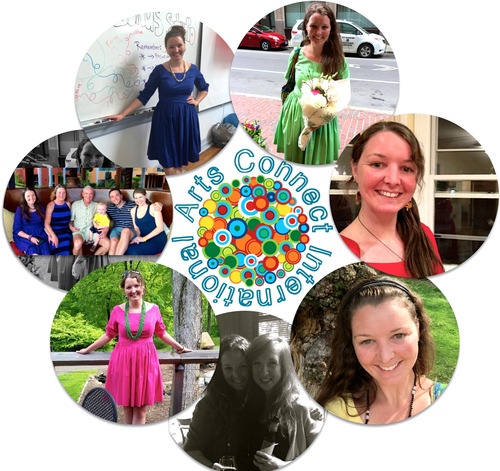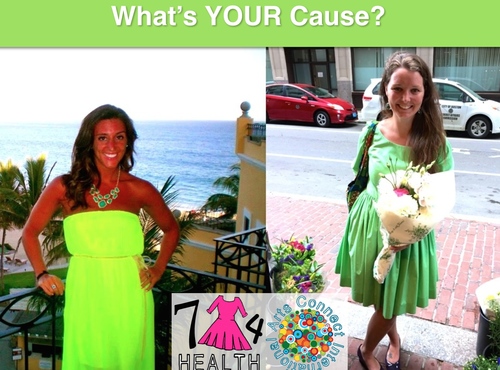Guest blogger bio: Jenna Stock is a Registered Dietitian Nutritionist (RDN) with a passion for health and wellness. She earned her Bachelor’s Degree in Nutritional Sciences and Management from The Pennsylvania State University. She has experience in both acute and sub-acute clinical settings in addition to the retail dietetics field. Jenna is dedicated to educating and counseling patients of all ages and health conditions. Jenna has researched, designed, and administered nutrition plans to aid in disease recovery & weight loss, as well as for competitive athletes. With a family history in the food service business and an enthusiasm for food and exercise, she is passionate about the nutrition and dietetics field and committed to living a healthy lifestyle herself. To be successful, she believes a healthy diet must also be fun and enjoyable and brings her energy for life and happiness to every aspect of her nutritional perspective. For more of Jenna’s nutrition tips & tricks please check out: HEAD TO TOE WELLNESS or follow her on her wellness journey on instagram @happyslimhealthybride or using the hashtag #happyslimhealthybride
Title: Conquering Food Labels
What is the first thing you look at when reading a food label?
Over the past few years of asking this question to clients I have only had one person ever answer this question correctly, and the best part is he said he didn’t even think it was correct.
Everyone’s first reaction is that it has to be sodium or calories. Then next I hear, sugar. Followed by fat and carbs. Well while, those are all-important to look at, if you don’t know what the serving size of the item you are looking at is, then all of those numbers are simply meaningless.
The serving size is at the top of the label and should be the absolute first thing you look at. Period. After that be sure to see how many servings per package there are. If it says 6 servings per package and you know you are eating the whole container, each number on that label must be multiplied by 6.
After the servings section you can then scan the second half of the label.
The percent daily values are there as a guide for you. What you really should know about them is this: 5% or less means low and 20% or more correlates to high. You want to look for total fats, saturated fats, trans fats, cholesterol and sodium to be in the low category and aim for foods that put fiber in that high range.
After you read the label, be sure to scan the ingredient list.
Ingredients are listed in descending order with the heaviest ingredient listed first. For example, a whole grain food item such as bread, should list whole grain as the first ingredient and an ingredient list with sugar as the first ingredient may not be the best choice.
Just as a pointer — always look for the word hydrogenated on an ingredient list. Even if a food claims to be trans fat free take a quick scan at the ingredient list and be sure that there are no hydrogenated or partially hydrogenated oils on that list, if so, the product could contain a half gram of trans fat (or less) per serving. If you eat more than one serving you are risking taking in about a whole gram of trans fat and not even realizing it.
Other label claims can be uncovered as follows:
- Low-calorie means the item has 40 calories or less per serving
- Reduced-calorie items have at least 25 percent fewer calories per serving when compared with a regular version of the item
- Light or lite items have one-third fewer calories compared to the originals
- Sugar-free has less than 0.5 gram of sugar per serving
- Reduced sugar means that the item has at least 25 % less sugar per serving when compared with a similar food
- Fat-free or 100% fat free items have less than 1/2 gram of fat per serving
- Low-fat items will have 3 grams or less fat per serving
- Low sodium means the item has140 mg or less of sodium per serving
- A “High in” claim provides 20 percent or more of the Daily Value of a specified nutrient per serving
- High fiber items contain five or more grams of fiber per serving. Be mindful, foods that may be fat free often have extra sugar or sodium or both.
You have to make up for the flavor somewhere, so be extra careful with these items.
How to avoid over-eating:
When it comes to weight loss and weight management it is of the utmost importance to follow portion sizes. Estimation does not work and when it comes to foods like oils and other calorically dense items. There is a huge difference between one and two tablespoons, about 120 calories difference. Buy and keep measuring cups and measuring spoons handy and actually measure out what a portion looks like. This is truly one of the only ways you will know what you are consuming. You may even be surprised that one serving is most of the time all you need.
And PS — the Rachel Ray oil pour doesn’t work for weight maintenance! Measure, measure, measure!
Tricks of the trade:
For me personally, when I see foods that I am purchasing that are listed in the serving section in ounces (1 oz serving) and another brand of the same type of item (that is nutritionally the same of course) listed in a quantifiable manner (i.e. a number of pretzels etc.) I will always choose the one I can measure easier. This way it prevents me from estimating.
When it comes to cheese, pre-portioned can be a really great way to ensure portion control. When faced with a block of cheese, it is difficult to be true to portion."¨"¨Never eat an item straight from the package. If you have a big bag of popcorn or nuts either measure out one serving or pre-measure the bag upon purchasing to avoid consuming more than one serving at a time. If the bag states it has 5 servings in it, pour it all out on the table, separate the contents into 5 piles and place each pile into its own Ziploc bag.Over eating problem solved.
Use smaller plates and bowls for meals and snacks — the kids plate (yes, with the princesses or super heroes on them!) will always be my number one recommendation since they are pre-portioned for you, but if you don’t have one accessible to you, use your salad plate as your dinner plate. The full plate will appear like more food than it really is and will therefore likely satisfy you more.
Eat smaller portions every 3-5 hours. This will make sure you never let yourself get too hungry which will therefore prevent overeating at your next meal.
When out to eat? If it looks too big, it probably is. Try ordering an appetizer as your entrée or splitting an entrée with a friend. If this isn’t possible, ask for a to-go bag as soon as you order, you can either ask them to simply put half the meal on the plate and half in a bag and deliver it to you with your plate or ask your waiter to bring you your own to-go container when the meal arrives and you can decide how much goes into the bag upon receiving the meal. All of these pointers and tricks for reading food labels brings me right back to my favorite word…moderation.
Be mindful of your labels and your portions. If a portion looks too big, it probably is! Enjoy the foods you love in smaller amounts and then you will never feel deprived!
Call to action: Do you have important information around one of our seven causes: HIV/AIDS, Mental Health, Nutrition, Heart Disease, Maternal Child Health, Cancer, Disability, that you want to share with a wider audience? Do you or a loved one currently live and/or struggle with one of these causes? Do you work in research, advocacy, prevention, treatment or care? We want to hear from YOU! Write to us today: 7dresses@artsconnectinternational.org to become a featured blog writer. Another way to get involved is to wear the color of the day in solidarity. Take a picture of yourself in the color of the day and Tweet it @ArtsConnectInt, tag us on Instagram @ArtsConnectInt, or send it to us on Facebook.
About 7 Dresses 4 Health (7D4H): 7D4H is a year-long arts and health education campaign lead by visual artist, Marian Brown, in conjunction with Arts Connect International. The objective of the campaign is to promote inclusive community practices through adDRESSing health artistically and collaboratively. To learn more about the genesis of the project, read Marian’s New Year Blog.
About this week's look & location: All of the dresses for 7 Dresses 4 Health were designed and sewn by Kim's Fashion Design. Love the look? Visit Kim at 100 Huntington Ave, Boston MA 02116, call her at (617) 267-9299 or email her: info@kimsfashion.com. Mention 7 Dresses 4 Health for a special discount!
Campaign Update (2017): All 7 Dresses 4 Health blogs were migrated from a former site, so the sharing analytics are inconsistent from when they were first published. We apologize to our guest bloggers, and readers, for this inconvenience. That said, the campaign garnered an average of 5K hits per blog, over 500,000 readers throughout 2015! Additionally, the average number of shares per guest blog was over 150x on social media (through Facebook and Twitter). Thank you for making this incredible campaign possible - and for all that it was for so many. With gratitude, Marian & the ACI Team




